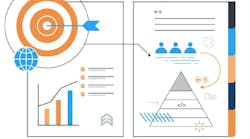8 Myths of the Subscription Business Model in Manufacturing
The subscription economy is real. There is no doubt that some industries have shifted to consumption business models (usage and subscription models). Consultants and software vendors are quick to conclude that ownership is dead—and user-ship is the way of the future. They are claiming that every single piece of hardware, equipment, and software can be sold using a recurring model consisting of subscription, usage, or outcome-based components.
In theory, indeed, everything can be transferred to a flexible consumption format. In practice, I do not believe it is the case. I have worked with industrial and manufacturing companies for the past 30 years. This long and deep experience allows me to see through the confusion and the myths of the subscription trend. I do agree there is room for subscription business models in manufacturing and it is essential for industrial businesses to set a target for the portion of sales moving to a recurring model.
Here are some of the most common myths I read and hear about:
1. One hundred percent of your business will move to recurring: Thinking that all equipment can be sold in the form of long-term subscriptions is irrational. Some of these pieces of equipment last for 20 or 30 years and need to be maintained and depreciated. Subscription contracts are traditionally 2 to 5 years maximum renewable over time. Should a customer decide not to renew, are they really going to dismantle assets on their production line after two years and switch to another supplier? The concept of switching costs might limit the use of subscription in some industries.
2. Hardware and equipment ownership will disappear: Semi-finished goods manufacturers selling parts, single components, and semi-assembled components might not be able to sell these in a subscription format. A lot of the manufacturing output is being integrated and absorbed into the value and supply chain. Only finished products might be able to move to PaaS model (product-as-a-service).
3. Subscription is for every one of your customers: A large portion of your customer base has no interest in flexible consumption model including subscription. They want to acquire the product or software and do things on their own. They want control over the acquired assets. With subscriptions, a lot of the control and data are shared with vendors.
4. It is easy to scale subscription offers: This is not the case. Assuming you have done the development work correctly, you will be facing headwinds in the scaling of the business. Most of the battles will be internal. You will have to do a lot of convincing and collaborating with IT, finance, legal, HR and sales just to cite a few. You need to have a strong back-office with the right tools and systems. Be ready for a marathon.
5. Once you have launched your subscription offer, you are done: Launching is just the beginning. In the world of subscription, the customer is at the heart of the business model. Customers are fickle! They want innovation, experience, freedom, and affordability. The success of a subscription business model comes from flexibility to make changes and adapt to changes in customer needs.
6. Subscription offers quick sales and fast route to profit: A subscription business will have a short-term negative impact on sales growth, profit, and cash flow. In the B2C and SaaS worlds, they call that the “swallow the fish” concept. You will face resistance from the finance and business leaders who expect quick sales growth and profit. Companies have to be ready to see negative trends upfront for longer-term positive trends. Finally, many subscription-based start-ups do not survive. They lose too much money and burn through cash at a fast pace.
7. You can apply B2C and SaaS KPIs to your subscription: Some of the KPIs used in the B2C and the SaaS world cannot be apply to the manufacturing world. For example, the rule of 40 states that, as long as your growth rate minus your EBIT losses are over 40, you are in good shape. Imagine you have 100% growth and you make a 60% EBIT loss, how well would this fly with your management? Some of the traditional SaaS KPIs are acceptable. The reality is that they will be blended with traditional manufacturing KPIs.
8. Free is the way to go: Freemium and free-trials concepts are well accepted in the B2C and SaaS worlds. Subscriptions where hardware and products are included might not survive the financial and business review process. Manufacturing and industrial companies traditionally try to recoup R&D and variable costs from the first sale. As a result, there is a need to focus on differentiated and attractive subscription offers that customers are willing to pay for from the get go. Easier said than done.
The subscription economy is here to stay. The tsunami is going to reach the B2B and industrial shores. However, the strength of the wave is not going to be as strong as it was with the B2C and B2B SaaS sectors. The manufacturing sector is going to benefit from the opportunity offered by the subscription business model. Software vendors and consultants offering subscription solutions to the manufacturing world have to adapt their offerings to be right-sized, right-engineered, and scalable at the speed of B2B. The speed and rate of adoption is going to be different.
Stephan M. Liozu, Ph.D. is chief value officer at Thales Group and founder of Value Innoruption Advisors, a consulting boutique specializing in value-based pricing, digital pricing, and industrial pricing. He is the author of nine pricing books and is a frequent keynote speaker at industrial and digital conferences.




